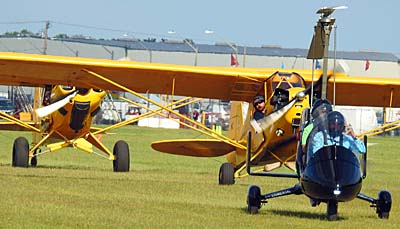 Sun ‘n Fun 2018 is done. The show actually closed early at about 1 PM due to forecasts of severe weather. Within hours, a bustling event began to look like a ghost town.
Despite the rushed finish, the event appeared to be a huge success. Reports were that it was a all-time record result for Sun ‘n Fun; we’ll wait to see the numbers to know more detail. My conversations with several vendors indicated strong sales interest and orders were taken, so customers and vendors both appear to be satisfied.
I spoke to many fans at the show and our conversations demonstrate to me that light aviation is very alive and well. In fact, I see this as one of the most invigorated periods in recent years. The interest is broad based and includes Part 103 ultralight vehicles, gyroplanes, modestly priced Special LSA, and top-line LSA models. On the kit side, interest also appears strong enough that backlogs are growing.
Sun ‘n Fun 2018 is done. The show actually closed early at about 1 PM due to forecasts of severe weather. Within hours, a bustling event began to look like a ghost town.
Despite the rushed finish, the event appeared to be a huge success. Reports were that it was a all-time record result for Sun ‘n Fun; we’ll wait to see the numbers to know more detail. My conversations with several vendors indicated strong sales interest and orders were taken, so customers and vendors both appear to be satisfied.
I spoke to many fans at the show and our conversations demonstrate to me that light aviation is very alive and well. In fact, I see this as one of the most invigorated periods in recent years. The interest is broad based and includes Part 103 ultralight vehicles, gyroplanes, modestly priced Special LSA, and top-line LSA models. On the kit side, interest also appears strong enough that backlogs are growing.Sun ‘n Fun 2018: Records Set, Sales Made, Customers Smiling
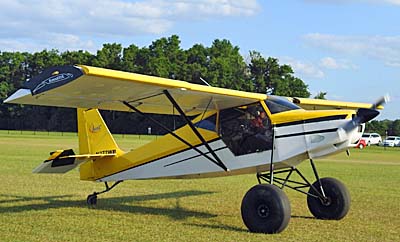
Just Aircraft’s SuperSTOL still draws huge attention but it was their little Part 103 Solo that wowed crowds.
Sun ‘n Fun 2018 is done. The show actually closed early at about 1 PM due to forecasts of severe weather. Within hours, a bustling event began to look like a ghost town.
Despite the rushed finish, the event appeared to be a huge success. Reports were that it was a all-time record result for Sun ‘n Fun; we’ll wait to see the numbers to know more detail. My conversations with several vendors indicated strong sales interest and orders were taken, so customers and vendors both appear to be satisfied.
I spoke to many fans at the show and our conversations demonstrate to me that light aviation is very alive and well. In fact, I see this as one of the most invigorated periods in recent years. The interest is broad based and includes Part 103 ultralight vehicles, gyroplanes, modestly priced Special LSA, and top-line LSA models. On the kit side, interest also appears strong enough that backlogs are growing. For pilots who can’t wait, a deepening market is developing for used LSA, many with very low time and great equipment installed — with a growing number of businesses serving the second-hand LSA market. It’s a great time to be a buyer and flyer.
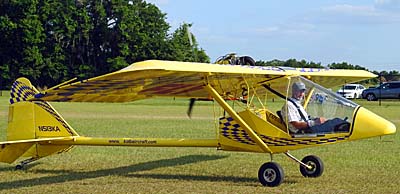
Kolb is finding strong demand for its Part 103 ultralight-compliant models.
I also met dozens of folks who very graciously said they enjoy our output in words and video and I am deeply appreciative of that positive feedback.
While the severe weather never actually transpired in Lakeland, an abundance of caution is warranted with human lives and so much expensive equipment at risk. I applaud Sun ‘n Fun management — led by John “Lites” Leenhouts — for making the right decision. Certainly from a participant standpoint the decisive move was appreciated as it allowed vendors to get back to a normal week of running their enterprise and customers to return home to their jobs and families.
Thanks for Our Best Day Ever
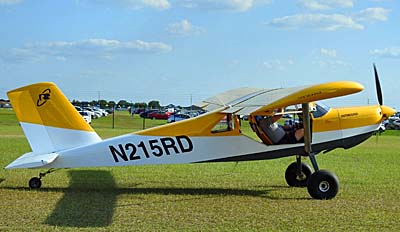
Rans Aircraft appears to have a major hit on their hands with the S-21 Outbound.
Showing a high level of enthusiasm from readers of this website who could not attend Sun ‘n Fun, we set an all-time record* for website views Sunday, even as things wound down. With more days like today, this website can better reach aviation aviation enthusiasts with the message of Light-Sport Aircraft, light kit-built aircraft, and ultralight aircraft.
I attribute this intensity to daily reporting of interesting aircraft. I will try to continue the pace next week at Aero Friedrichshafen. In addition, you will soon begin to enjoy numerous videos as Videoman Dave can edit them (a large task; please be patient).
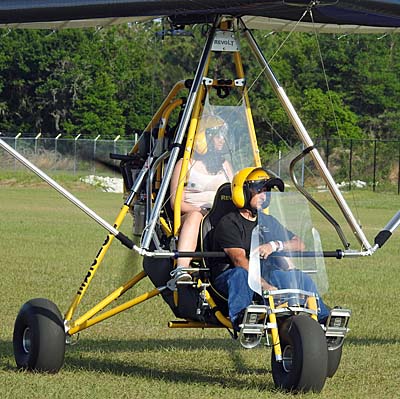
Revolt is the newest SLSA and continues the winning ways of Evolution Trikes. Did you notice the yellow theme in all these images?
We have one day at home to wash clothes, repack, and leave the following day for a flight to Germany yet I would not trade this kind of work for anything. I look forward to seeing many friends and fans in Europe as well as reporting to Americans back home plus many readers all over the planet.
It is amazing to use the technologies of just this last decade or so to provide such coverage. I’m honored to have this opportunity and I so appreciate your loyal readership. Thank you!
* Based on reader views from April 15, 2018, if this rate was sustained, ByDanJohnson.com would generate substantially more than a million views per year. While AOPA’s leading magazine, Pilot, may generate this many views in only a month or two, ByDanJohnson.com enjoys the attention of readers singularly interested in the aircraft we cover. No one is looking for warbirds or spam cans here.
 Sun ‘n Fun 2018 is done. The show actually closed early at about 1 PM due to forecasts of severe weather. Within hours, a bustling event began to look like a ghost town.
Despite the rushed finish, the event appeared to be a huge success. Reports were that it was a all-time record result for Sun ‘n Fun; we’ll wait to see the numbers to know more detail. My conversations with several vendors indicated strong sales interest and orders were taken, so customers and vendors both appear to be satisfied.
I spoke to many fans at the show and our conversations demonstrate to me that light aviation is very alive and well. In fact, I see this as one of the most invigorated periods in recent years. The interest is broad based and includes Part 103 ultralight vehicles, gyroplanes, modestly priced Special LSA, and top-line LSA models. On the kit side, interest also appears strong enough that backlogs are growing.
Sun ‘n Fun 2018 is done. The show actually closed early at about 1 PM due to forecasts of severe weather. Within hours, a bustling event began to look like a ghost town.
Despite the rushed finish, the event appeared to be a huge success. Reports were that it was a all-time record result for Sun ‘n Fun; we’ll wait to see the numbers to know more detail. My conversations with several vendors indicated strong sales interest and orders were taken, so customers and vendors both appear to be satisfied.
I spoke to many fans at the show and our conversations demonstrate to me that light aviation is very alive and well. In fact, I see this as one of the most invigorated periods in recent years. The interest is broad based and includes Part 103 ultralight vehicles, gyroplanes, modestly priced Special LSA, and top-line LSA models. On the kit side, interest also appears strong enough that backlogs are growing.

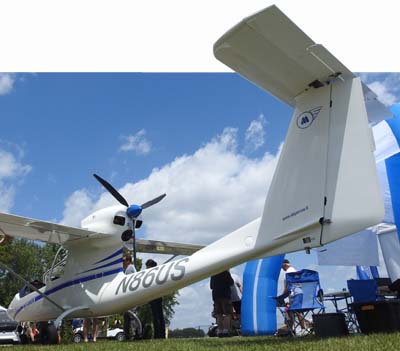 When most pilots think of imports, they assume a foreign manufacturer builds an aircraft in another country, finds a U.S. representative, and sends their product here. That’s certainly the standard practice.
When most pilots think of imports, they assume a foreign manufacturer builds an aircraft in another country, finds a U.S. representative, and sends their product here. That’s certainly the standard practice.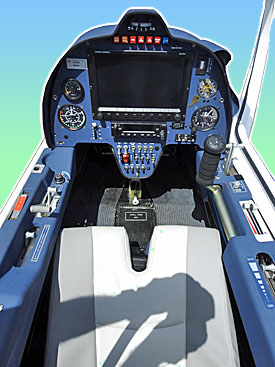 Sky Arrow has long been well represented by
Sky Arrow has long been well represented by 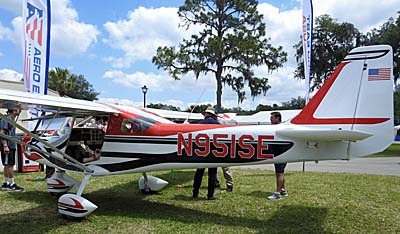 I described this experience but soon thereafter I was called to account for allegedly trampling on the rights of a Columbian designer who claimed the Serbian company had no right to produce it. At
I described this experience but soon thereafter I was called to account for allegedly trampling on the rights of a Columbian designer who claimed the Serbian company had no right to produce it. At 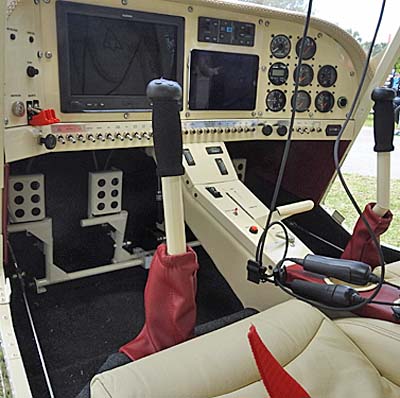 Initial production will be mostly done in Serbia, but as the U.S. operation gears up, raw materials such as aluminum sheet that have come from American sources will be partially prepared in the U.S., sent to Serbia for labor-intensive work by Serbians, and returned to American for final assembly and fitting of components such as avionics and engines that come from still other countries, including the USA. Though this may sound complex, it is very similar to what Boeing and Airbus do as they build airlines. It works for small companies, too.
Initial production will be mostly done in Serbia, but as the U.S. operation gears up, raw materials such as aluminum sheet that have come from American sources will be partially prepared in the U.S., sent to Serbia for labor-intensive work by Serbians, and returned to American for final assembly and fitting of components such as avionics and engines that come from still other countries, including the USA. Though this may sound complex, it is very similar to what Boeing and Airbus do as they build airlines. It works for small companies, too.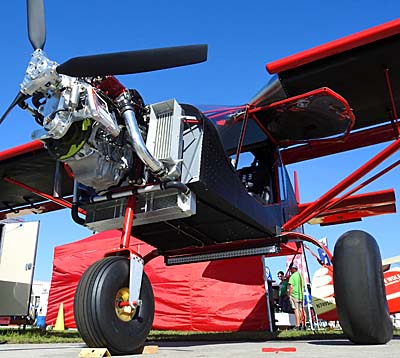 On a single day of recording several videos at
On a single day of recording several videos at 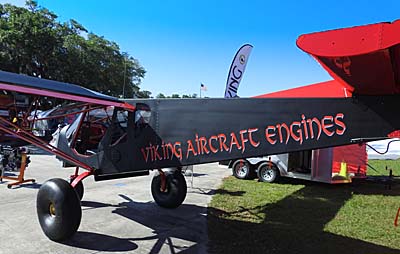 Viking Aircraft Engines takes a Honda block and sets it up as an aircraft powerplant. Many homebuilders have installed them since the company reorganized in 2010. Their powerful engines have
Viking Aircraft Engines takes a Honda block and sets it up as an aircraft powerplant. Many homebuilders have installed them since the company reorganized in 2010. Their powerful engines have 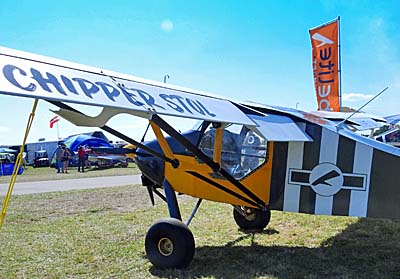 He has altered the wing to be all metal with a bonded adhesion that leaves the metallic upper surface as clean as a composite wing. Fat tundra tires fitted to the show example gave the taildragger a gutsy appeal.
He has altered the wing to be all metal with a bonded adhesion that leaves the metallic upper surface as clean as a composite wing. Fat tundra tires fitted to the show example gave the taildragger a gutsy appeal.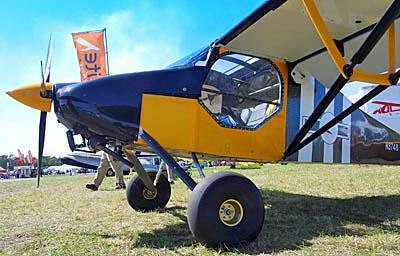 The events triggering the long distance migration by Viking and Chipper are the Alaska Airman show in May— held in the cavernous FedEx hangar plus outside displays — plus the Valdez STOL competition.
The events triggering the long distance migration by Viking and Chipper are the Alaska Airman show in May— held in the cavernous FedEx hangar plus outside displays — plus the Valdez STOL competition.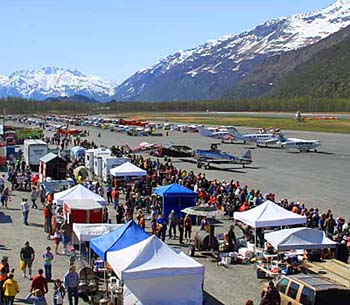 One week later comes the
One week later comes the 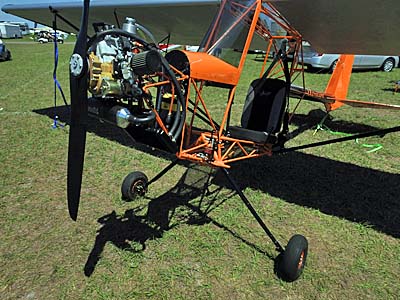 After a damp opening day, the sun returned on day #2 at
After a damp opening day, the sun returned on day #2 at 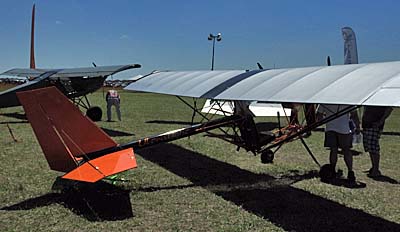 DeLand Showcase
DeLand Showcase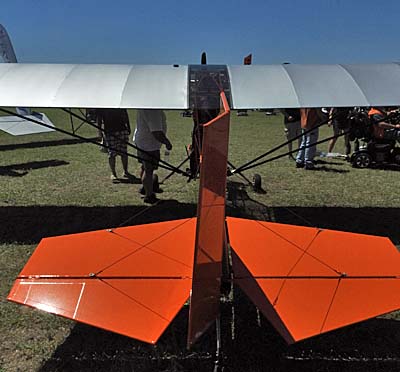 Overall this seems part of a surge in Part 103 interest, for plenty of good reasons: • greater freedom (no license or registration required, • no medical of any kind needed, and • the aircraft can be delivered ready-to-fly. The best news for budget-minded flying enthusiasts is truly • low prices for these single seaters that typically fly 40-55 mph. Companies like Kolb Aircraft and U-Fly-It — maker of the
Overall this seems part of a surge in Part 103 interest, for plenty of good reasons: • greater freedom (no license or registration required, • no medical of any kind needed, and • the aircraft can be delivered ready-to-fly. The best news for budget-minded flying enthusiasts is truly • low prices for these single seaters that typically fly 40-55 mph. Companies like Kolb Aircraft and U-Fly-It — maker of the 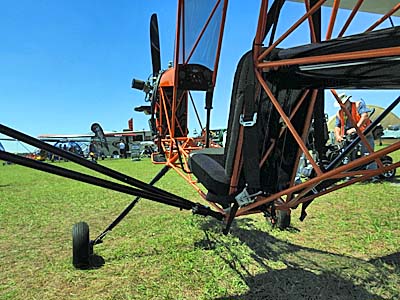 Additional changes are likely, for example:
Additional changes are likely, for example: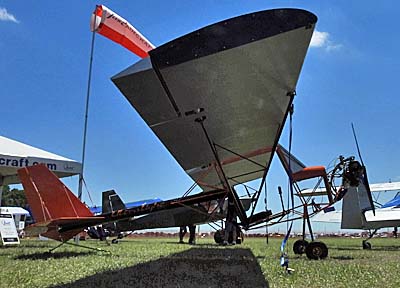 By the time a new AirVenture rolls around this summer — barely over three months away — Just should be ready to start deliveries to selected customers who will build kits and offer Just feedback on the aircraft. After a short period of evaluation, Just plans to offer fully-built models if the buyer selects appropriate engines and options.
By the time a new AirVenture rolls around this summer — barely over three months away — Just should be ready to start deliveries to selected customers who will build kits and offer Just feedback on the aircraft. After a short period of evaluation, Just plans to offer fully-built models if the buyer selects appropriate engines and options.
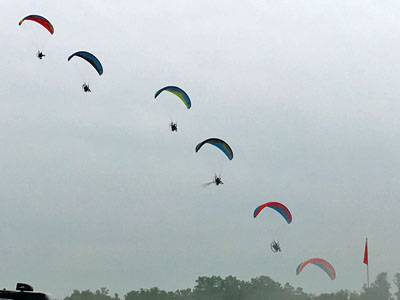
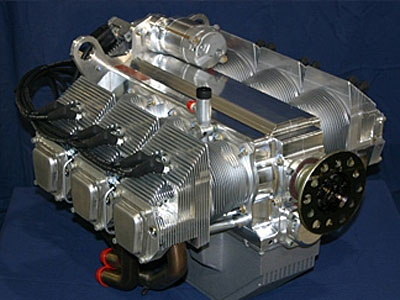 After
After 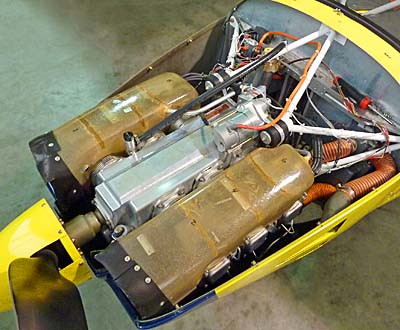 Pete Krotje, owner of Jabiru North America stated: “Arion Aircraft has been a Jabiru Service Center for many years. Their experience makes this a perfect fit to advance the sales of Jabiru brand power products throughout North America. I’m eagerly looking forward to the energy and creativity that Nick Otterback and Arion Aircraft will bring to the Jabiru engine fleet in North America.”
Pete Krotje, owner of Jabiru North America stated: “Arion Aircraft has been a Jabiru Service Center for many years. Their experience makes this a perfect fit to advance the sales of Jabiru brand power products throughout North America. I’m eagerly looking forward to the energy and creativity that Nick Otterback and Arion Aircraft will bring to the Jabiru engine fleet in North America.”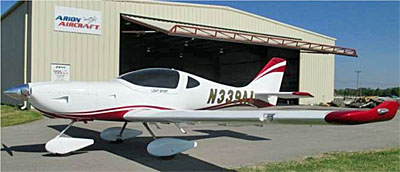 Nick said his enterprise will offer repair and maintenance services for Jabiru engines as well as Jabiru Aircraft from the former Jabiru North America location (located next door to Arion Aircraft). “We’re really excited about Jabiru’s new Gen IV engine and the benefits it will offer amateur builders.” Pete Krotje will continue to help with Jabiru technical support as Arion adds the Jabiru engine business.
Nick said his enterprise will offer repair and maintenance services for Jabiru engines as well as Jabiru Aircraft from the former Jabiru North America location (located next door to Arion Aircraft). “We’re really excited about Jabiru’s new Gen IV engine and the benefits it will offer amateur builders.” Pete Krotje will continue to help with Jabiru technical support as Arion adds the Jabiru engine business.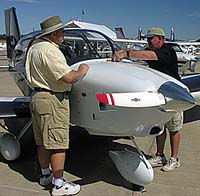
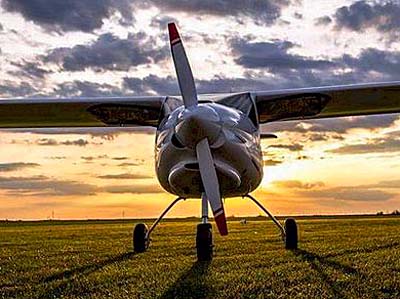 One bone of contention among LSA sellers is that legacy flight schools — the sort that typically uses Cessna or Piper trainers — sometimes disregard LSA as trainer aircraft. “They’re built too lightly.” “The nose wheels are too weak.” “My mechanic doesn’t know the Rotax engine.” Some may have even more creative excuses.
One bone of contention among LSA sellers is that legacy flight schools — the sort that typically uses Cessna or Piper trainers — sometimes disregard LSA as trainer aircraft. “They’re built too lightly.” “The nose wheels are too weak.” “My mechanic doesn’t know the Rotax engine.” Some may have even more creative excuses.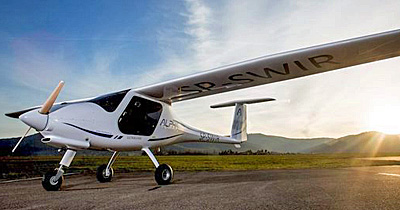 He referenced an order for 15 Pipistrel Alpha Trainer aircraft with instrumentation configured for IFR training (photo) ordered for delivery to San Bernardino, California.
He referenced an order for 15 Pipistrel Alpha Trainer aircraft with instrumentation configured for IFR training (photo) ordered for delivery to San Bernardino, California.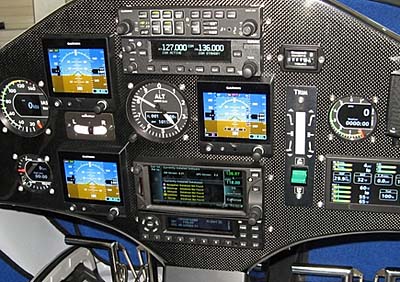 WWW considered SportCruiser, Tecnam, Skycatcher, Flight Design, Evektor, Pipistrel and a few others. “We leased and put some of these airplanes to work in our training environment,”
WWW considered SportCruiser, Tecnam, Skycatcher, Flight Design, Evektor, Pipistrel and a few others. “We leased and put some of these airplanes to work in our training environment,”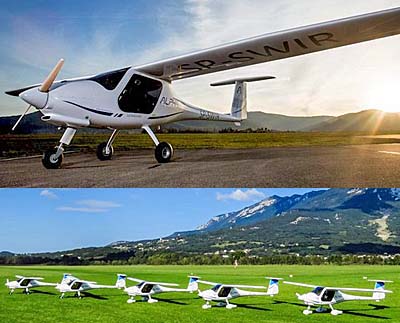
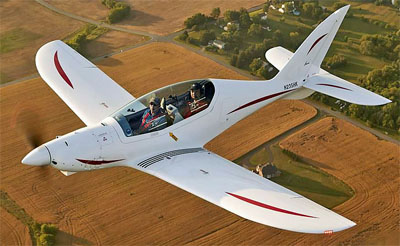 This Shark is one I’ve long admired since meeting its creator, Jaro Dostal many years ago at the German airshow
This Shark is one I’ve long admired since meeting its creator, Jaro Dostal many years ago at the German airshow 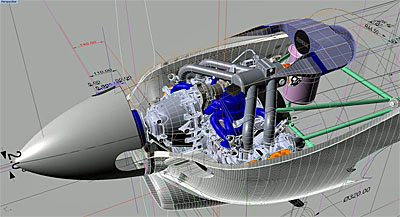 A special “Mako” Shark is now available, reported an enthusiastic Jon. “The Rotax 915-powered Shark will enhance high altitude performance, increase cruising speed, and rate of climb” he said. “The first prototype is expected to be completed this summer.” The factory is now taking orders. The nearby images show new, larger cowlings to accommodate a turbocharged, intercooler-equipped 135 horsepower engine.
A special “Mako” Shark is now available, reported an enthusiastic Jon. “The Rotax 915-powered Shark will enhance high altitude performance, increase cruising speed, and rate of climb” he said. “The first prototype is expected to be completed this summer.” The factory is now taking orders. The nearby images show new, larger cowlings to accommodate a turbocharged, intercooler-equipped 135 horsepower engine.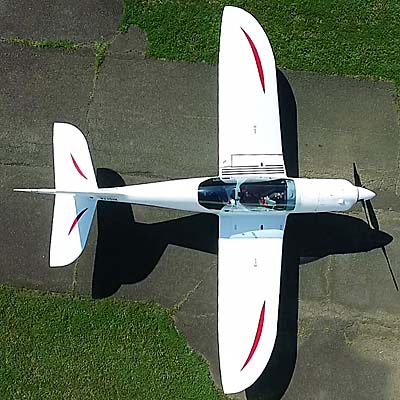 “The current factory backlog is between 18-24 months for a ready-to-fly aircraft or approximately 5-6 months for a kit,” wrote Jon. However, he added, “With the factory ramping up to three from one aircraft per month, the wait is expected to decrease.”
“The current factory backlog is between 18-24 months for a ready-to-fly aircraft or approximately 5-6 months for a kit,” wrote Jon. However, he added, “With the factory ramping up to three from one aircraft per month, the wait is expected to decrease.”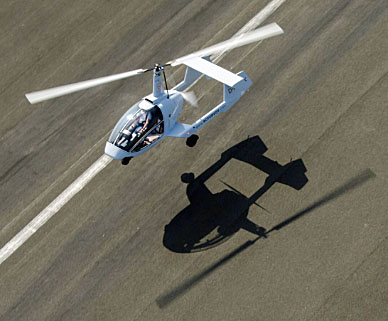 Besides LSA seaplanes, one area of furious development (and sales) is gyroplanes, the term modern industry prefers to “gyrocopter,” which was actually a branded name used since the days of Igor Benson.
Besides LSA seaplanes, one area of furious development (and sales) is gyroplanes, the term modern industry prefers to “gyrocopter,” which was actually a branded name used since the days of Igor Benson.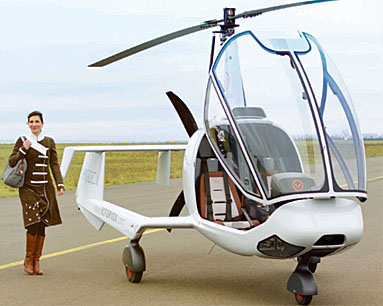
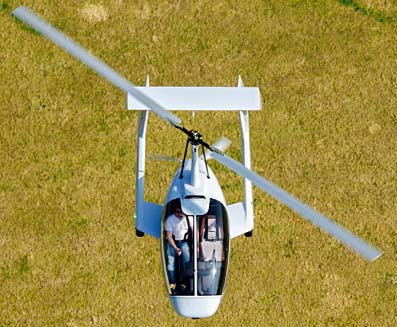 Rotorvox Aero will act as the U.S. importer and will display C2A in Lakeland from April 10
Rotorvox Aero will act as the U.S. importer and will display C2A in Lakeland from April 10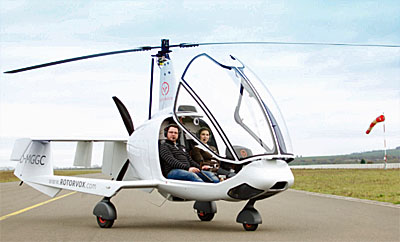 C2A is sold ready-to-fly in Europe but must be sold as an Experimental Amateur Built kit in the USA.
C2A is sold ready-to-fly in Europe but must be sold as an Experimental Amateur Built kit in the USA. 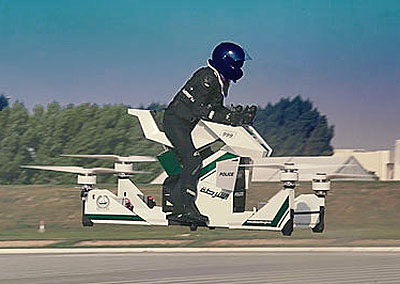 After you finish Easter Sunday dinner with the family, how about going out for a spin on your new Scorpion 3 Hoverbike? Is this merely an April fools joke?
After you finish Easter Sunday dinner with the family, how about going out for a spin on your new Scorpion 3 Hoverbike? Is this merely an April fools joke?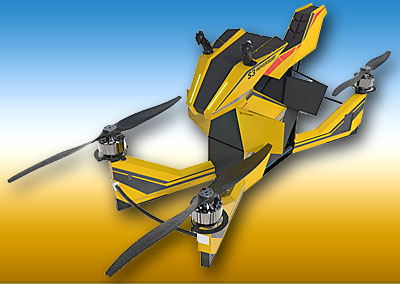 “Hoverbike Scorpion 3 is an extreme sports machine for those who are not afraid of height and speed,” the
“Hoverbike Scorpion 3 is an extreme sports machine for those who are not afraid of height and speed,” the 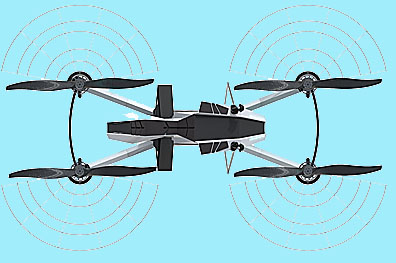 “Steel duct protection” is provided, evidently to keep soft body parts from contacting spinning props, and Scorpion 3 comes with a “Safety Lock.” I suppose this keeps your 12-year-old nephew from taking it out for a spin while the rest of the family is digesting their Easter Sunday dinner.
“Steel duct protection” is provided, evidently to keep soft body parts from contacting spinning props, and Scorpion 3 comes with a “Safety Lock.” I suppose this keeps your 12-year-old nephew from taking it out for a spin while the rest of the family is digesting their Easter Sunday dinner.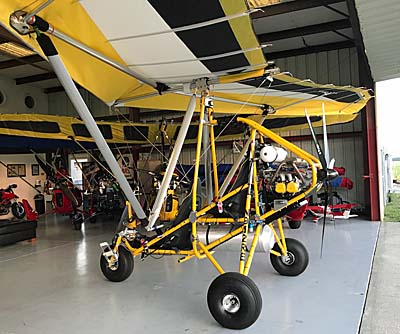
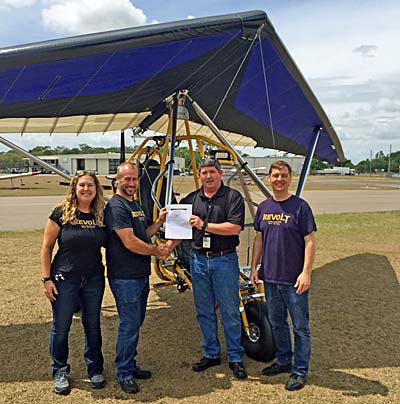
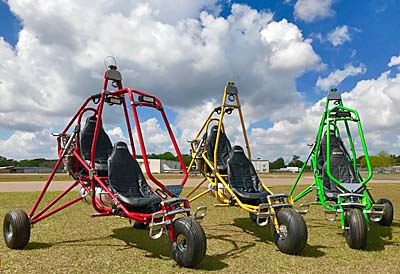 Dan Saunders aided Larry and Amy as they got ready for the inspection. Dan has already earned his credentials as he worked with Abid Farooqui of
Dan Saunders aided Larry and Amy as they got ready for the inspection. Dan has already earned his credentials as he worked with Abid Farooqui of 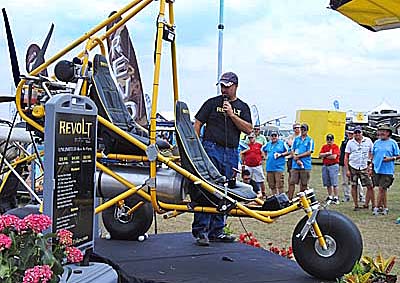
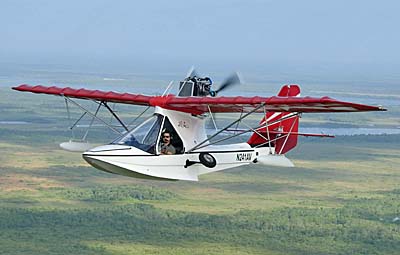 Today I got a good look at the new Aventura S-17 built in DeLand, Florida — also home of the Aerolite 103 and the DeLand Showcase …plus a large volume of sky diving.
Today I got a good look at the new Aventura S-17 built in DeLand, Florida — also home of the Aerolite 103 and the DeLand Showcase …plus a large volume of sky diving.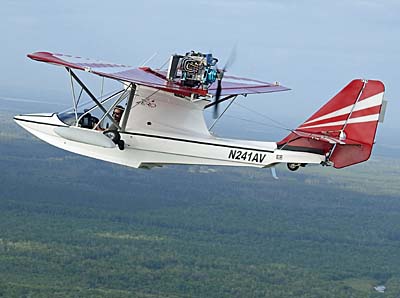 S-17 gets its name from the use of a
S-17 gets its name from the use of a 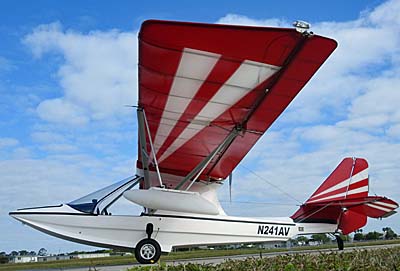 “I would put up this aircraft up against any other seaplane,” Alex stated. He indicated water runs are shortened and his climb rate increased such that S-17 can operate comfortably out of relatively small lakes.
“I would put up this aircraft up against any other seaplane,” Alex stated. He indicated water runs are shortened and his climb rate increased such that S-17 can operate comfortably out of relatively small lakes.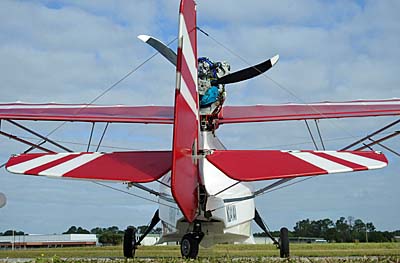 For $90,000 you can buy a very well equipped Aventura Including the 117-horsepower AeroMomentum
For $90,000 you can buy a very well equipped Aventura Including the 117-horsepower AeroMomentum 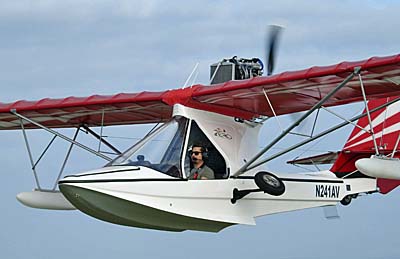 If you want to put your name in early for the one S-17 available at Sun’n Fun 2018, contact
If you want to put your name in early for the one S-17 available at Sun’n Fun 2018, contact  Scott Severen is an old friend and a longtime veteran of the light aircraft business. In addition to a long career with wide experience, Scott is a board member of the
Scott Severen is an old friend and a longtime veteran of the light aircraft business. In addition to a long career with wide experience, Scott is a board member of the 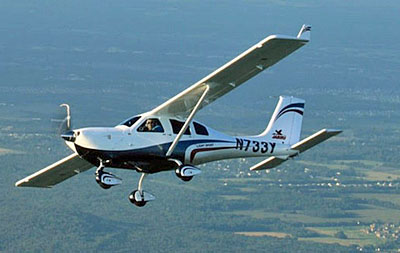 For others, the ability to acquire an aerial perspective is the objective …flying 1,500 feet over fields and rivers, catching the smell of a planted crop in the air, or freshly plowed ground, the salt air near the ocean…
For others, the ability to acquire an aerial perspective is the objective …flying 1,500 feet over fields and rivers, catching the smell of a planted crop in the air, or freshly plowed ground, the salt air near the ocean…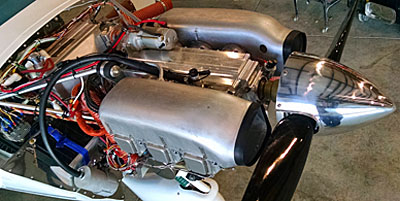 Is it smart to keep current, always learning about your craft and honing flying knowledge and skills? Of course it is! This is just like on the golf course or in any sport. Is maintenance really required? Of course, and the engine and airframe manufacturers have specific maintenance schedules you should follow. A fascinating provision here is that many repair and maintenance items can be performed on their Special LSA by the owner. These vary by manufacturer and are specifically authorized in the aircraft manufacturers’ maintenance manuals. The better — safer — we do something, the more we enjoy it.
Is it smart to keep current, always learning about your craft and honing flying knowledge and skills? Of course it is! This is just like on the golf course or in any sport. Is maintenance really required? Of course, and the engine and airframe manufacturers have specific maintenance schedules you should follow. A fascinating provision here is that many repair and maintenance items can be performed on their Special LSA by the owner. These vary by manufacturer and are specifically authorized in the aircraft manufacturers’ maintenance manuals. The better — safer — we do something, the more we enjoy it.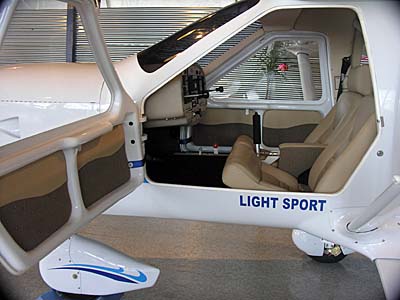 What is one of the simplest things about LSA? If you have a private pilot certificate, you can simply exercise Sport Pilot privileges without doing anything else! What a simple option: just fly!
What is one of the simplest things about LSA? If you have a private pilot certificate, you can simply exercise Sport Pilot privileges without doing anything else! What a simple option: just fly!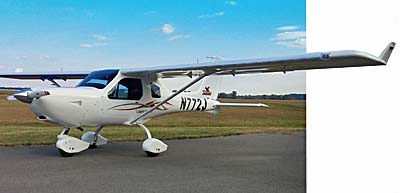 The FAA has taken LSA seriously, auditing the aircraft manufacturers to ensure they correctly implement quality assurance systems through production, and that they utilize continued operational safety programs to ensure reliability and safety in the field.
The FAA has taken LSA seriously, auditing the aircraft manufacturers to ensure they correctly implement quality assurance systems through production, and that they utilize continued operational safety programs to ensure reliability and safety in the field. Are LSA practical for flying from coast to coast? In terms of reliability, absolutely! Enjoing fun and adventure, of seeing the United Sates from 1,500 or 4,500 feet, or FL10, well… it doesn’t get any better! You can use small municipal airports, or go to big FBOs you may used to, getting the same service and amenities. You may have some landing fees at places like major airline, Class B airports — and you may need additional training to enter Class B airspace — but that is available and only takes a logbook entry, Many pilots prefer to stay clear of Class Bravo airspace, but qualified pilots can use the system just like a Jet A turbine-powered aircraft.
Are LSA practical for flying from coast to coast? In terms of reliability, absolutely! Enjoing fun and adventure, of seeing the United Sates from 1,500 or 4,500 feet, or FL10, well… it doesn’t get any better! You can use small municipal airports, or go to big FBOs you may used to, getting the same service and amenities. You may have some landing fees at places like major airline, Class B airports — and you may need additional training to enter Class B airspace — but that is available and only takes a logbook entry, Many pilots prefer to stay clear of Class Bravo airspace, but qualified pilots can use the system just like a Jet A turbine-powered aircraft.
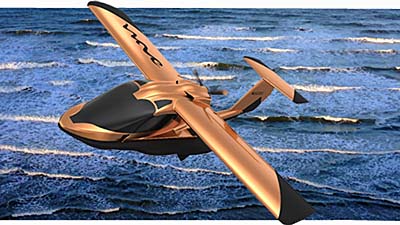
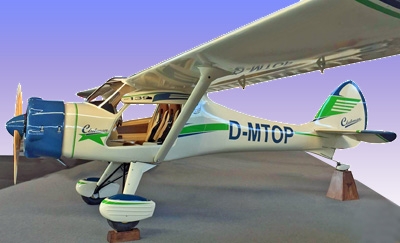
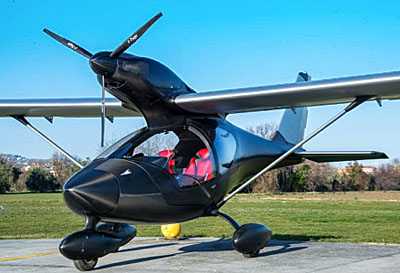
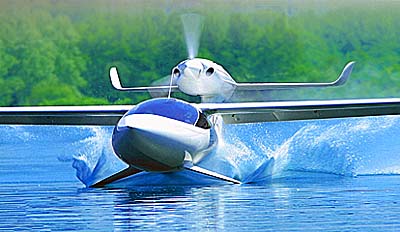
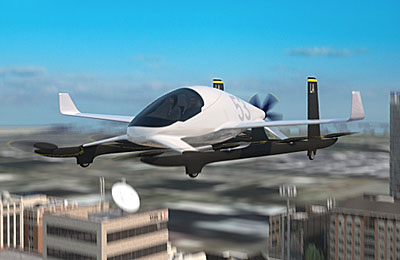 By the way, the use of technology seeks not only to save weight. New methods are used because they can, that is, developers don’t need to jump through the regulatory hoops as demanded in Part 23. LSA developers can quickly implement new ideas and materials.
By the way, the use of technology seeks not only to save weight. New methods are used because they can, that is, developers don’t need to jump through the regulatory hoops as demanded in Part 23. LSA developers can quickly implement new ideas and materials.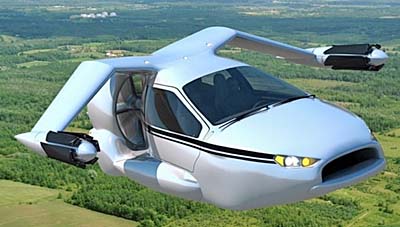
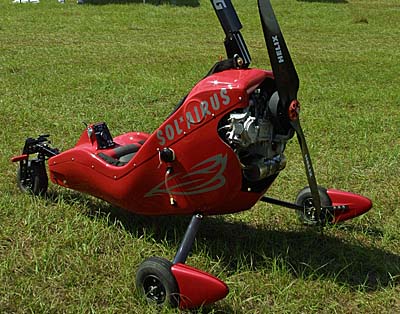
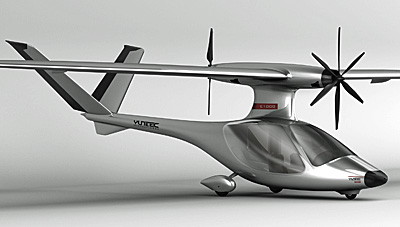
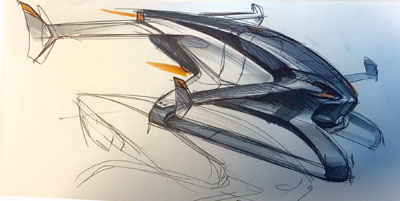
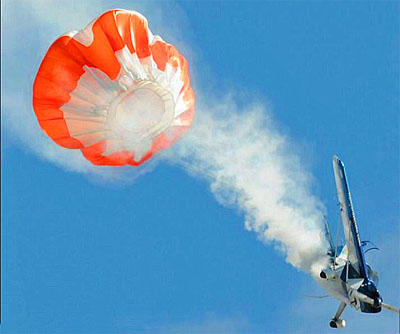
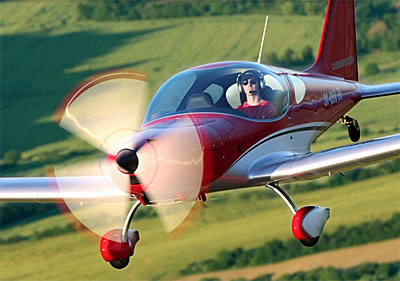
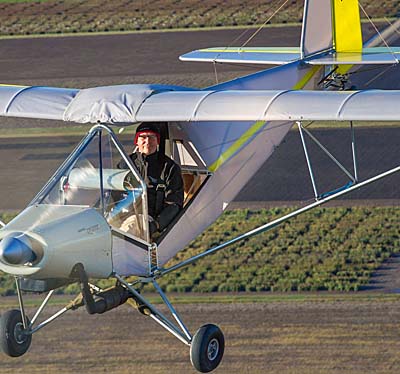 Since I saw what had to be Randy Schlitter’s first appearance at Sun ‘n Fun, and since he is celebrating the 35th anniversary of the first flight of his S3 single-place Coyote I …well, we’ve been in this game for a good amount of time. And a “good time” is exactly what it has been.
Since I saw what had to be Randy Schlitter’s first appearance at Sun ‘n Fun, and since he is celebrating the 35th anniversary of the first flight of his S3 single-place Coyote I …well, we’ve been in this game for a good amount of time. And a “good time” is exactly what it has been.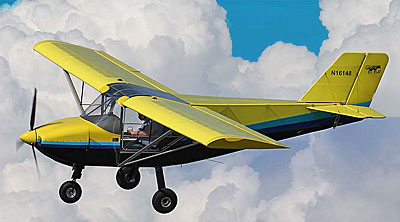
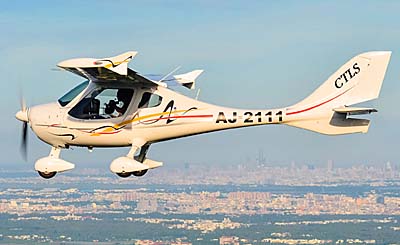 For most years of Light-Sport Aircraft one aircraft model convincingly lead the parade. That aircraft is broadly identified as the CT-series: CT2K, CTSW, CTLS, and CTLSi. Until
For most years of Light-Sport Aircraft one aircraft model convincingly lead the parade. That aircraft is broadly identified as the CT-series: CT2K, CTSW, CTLS, and CTLSi. Until 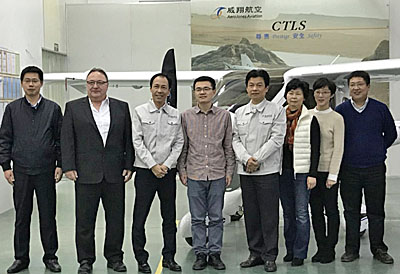
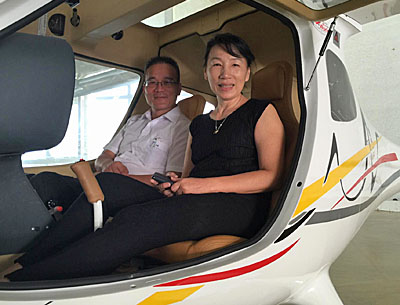
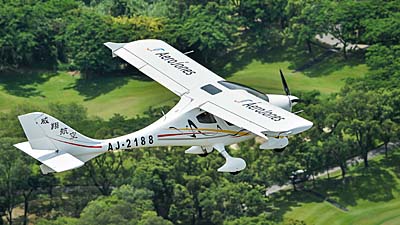 In addition to China, AeroJones Aviation is able to ship fully manufactured aircraft to other Asia-Pacific countries that accept ASTM standards for approvals, including Australia, New Zealand, Indonesia, Malaysia, Philippines, Japan, Korea, Thailand, plus additional countries in the region.
In addition to China, AeroJones Aviation is able to ship fully manufactured aircraft to other Asia-Pacific countries that accept ASTM standards for approvals, including Australia, New Zealand, Indonesia, Malaysia, Philippines, Japan, Korea, Thailand, plus additional countries in the region.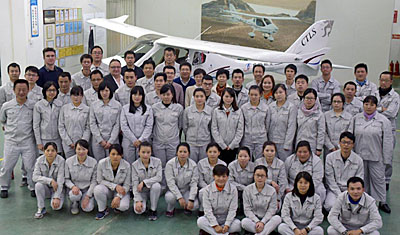
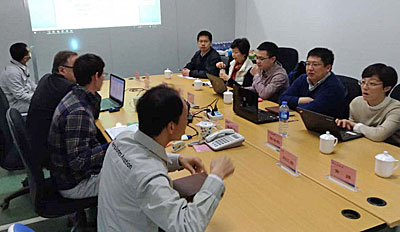
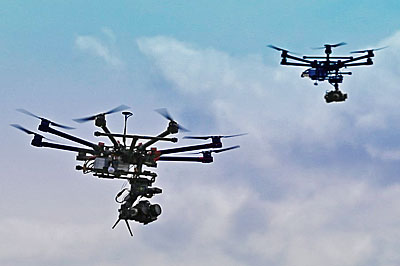 The aviation industry — led by a flock of alphabet member organizations — is clinking champagne glasses over the “defeat” of ATC Privatization. To some observers, this looks like a case of contented naval-gazing. Meanwhile, another development made the mainstream news today. It may not be reported in the aviation press.
The aviation industry — led by a flock of alphabet member organizations — is clinking champagne glasses over the “defeat” of ATC Privatization. To some observers, this looks like a case of contented naval-gazing. Meanwhile, another development made the mainstream news today. It may not be reported in the aviation press.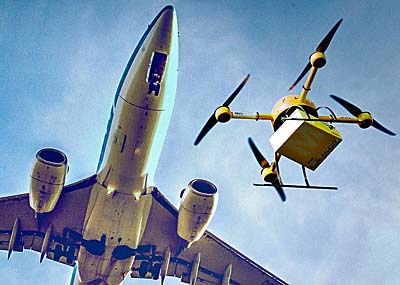 Over 1,000 people attended a conference on …get this — a completely (and genuinely) private air traffic control effort. What do I mean?
Over 1,000 people attended a conference on …get this — a completely (and genuinely) private air traffic control effort. What do I mean?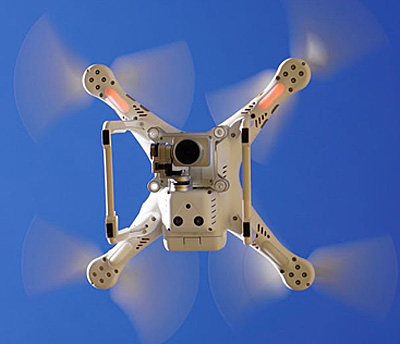
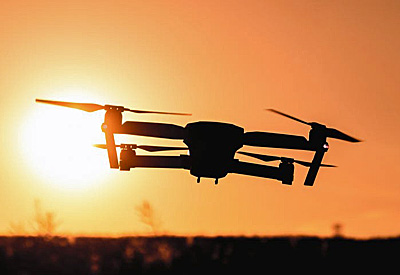 “For many of the engineering challenges, ‘the technology to do this is basically off the shelf,’ including communication principles and software repurposed from cellphone companies, according to Gur Kimchi, vice president of Amazon Prime Air,” who added that “answers for some of the most vexing technical questions could ‘take a year or two.’” Think how seamlessly you are handed off from cellphone tower to tower and you motor around the metro area.
“For many of the engineering challenges, ‘the technology to do this is basically off the shelf,’ including communication principles and software repurposed from cellphone companies, according to Gur Kimchi, vice president of Amazon Prime Air,” who added that “answers for some of the most vexing technical questions could ‘take a year or two.’” Think how seamlessly you are handed off from cellphone tower to tower and you motor around the metro area.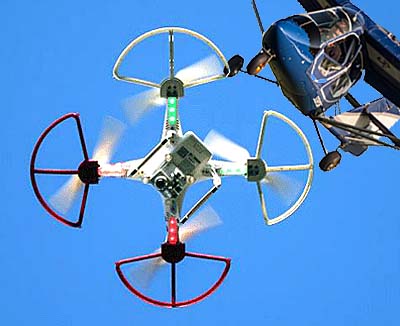
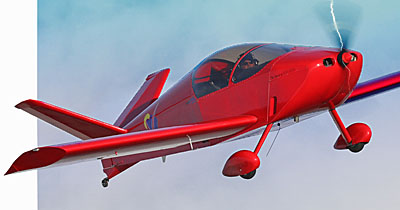
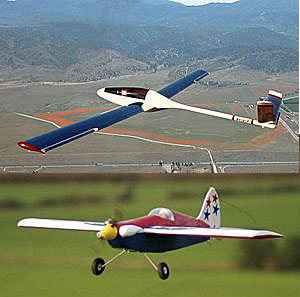
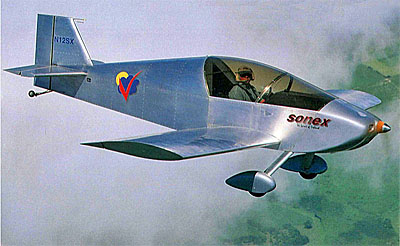 After more than 20 years in the homebuilder enterprise, John took a first flight on February 28, 1998 in a completely new aircraft: Sonex serial number 1, or SX1 (image from EAA Sport Aviation).
After more than 20 years in the homebuilder enterprise, John took a first flight on February 28, 1998 in a completely new aircraft: Sonex serial number 1, or SX1 (image from EAA Sport Aviation).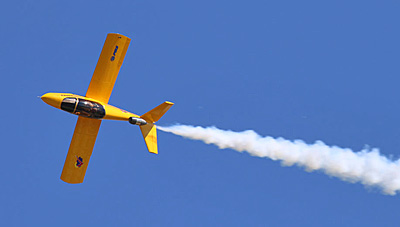 Along the way, John and his growing team at Sonex Aircraft — these days headed by the very capable Mark Schaible — experimented with electric propulsion, dabbled in military drone aircraft, and even added a “jet for the rest of us” called SubSonex …always a clever aircraft name ready to emerge from this
Along the way, John and his growing team at Sonex Aircraft — these days headed by the very capable Mark Schaible — experimented with electric propulsion, dabbled in military drone aircraft, and even added a “jet for the rest of us” called SubSonex …always a clever aircraft name ready to emerge from this 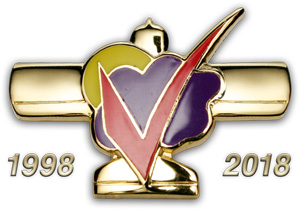
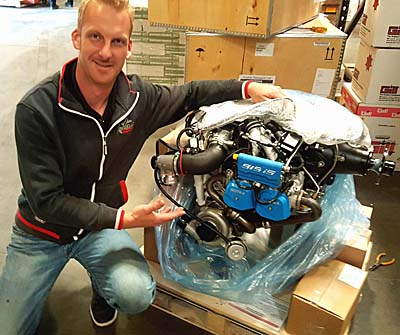 Pilots and builders seeking more power can welcome the Rotax 915iS fuel-injected, turbo-charged, intercooler-equipped 135-horsepower engine. Talk about a kick in the pants!
Pilots and builders seeking more power can welcome the Rotax 915iS fuel-injected, turbo-charged, intercooler-equipped 135-horsepower engine. Talk about a kick in the pants!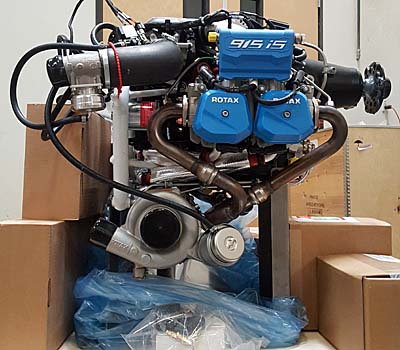 Bryan enthusiastically reported, “I had a recent opportunity to fly with the 915is on Rotax guru, Ronnie Smith‘s Rans S-7 that he is testing. I was very impressed!” Ronnie, proprietor of
Bryan enthusiastically reported, “I had a recent opportunity to fly with the 915is on Rotax guru, Ronnie Smith‘s Rans S-7 that he is testing. I was very impressed!” Ronnie, proprietor of  For pilots, builders, or repair shops interested in information on the 915is, or for those ready to place an order please visit the California Power Systems
For pilots, builders, or repair shops interested in information on the 915is, or for those ready to place an order please visit the California Power Systems 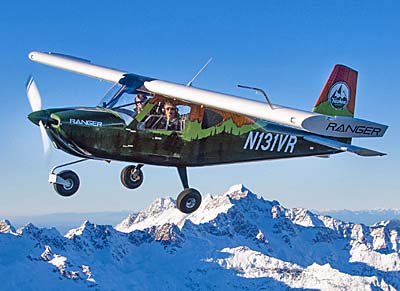 From Washington State arrives a fresh, new airplane created from scratch to enter the Special LSA space. You don’t know the company but you may know the people, at least indirectly. Welcome to Vashon and their new Ranger R7!
From Washington State arrives a fresh, new airplane created from scratch to enter the Special LSA space. You don’t know the company but you may know the people, at least indirectly. Welcome to Vashon and their new Ranger R7!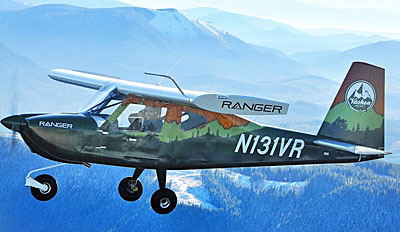 The team picked the name Vashon Aircraft because “we wanted to give it a Pacific Northwest rugged, utilitarian ‘jeep’ feel,” said Bellesheim. “You can go out in nature, get dirty, and get back in the airplane without worrying about messing the airplane up. We live among national parks so the name Ranger comes from [these] parks. We chose R7 because it sounds modern and cool.”
The team picked the name Vashon Aircraft because “we wanted to give it a Pacific Northwest rugged, utilitarian ‘jeep’ feel,” said Bellesheim. “You can go out in nature, get dirty, and get back in the airplane without worrying about messing the airplane up. We live among national parks so the name Ranger comes from [these] parks. We chose R7 because it sounds modern and cool.”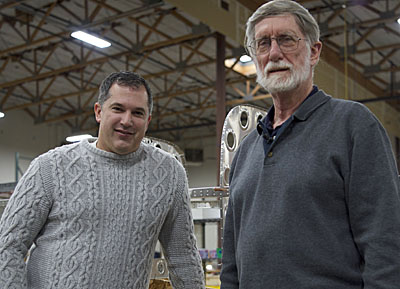
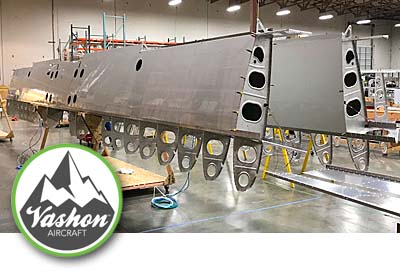 Vashon claims to be one of the first companies to form pre-painted metal. “We purchase sheets of stock aluminum that have been painted and then form them into parts using a modern turret punch, laser, and hydropress technology. Because of that we have taken a whole step out of the airplane building process by eliminating the need to paint after assembly,” reported Bellesheim. “We also spent a lot of time developing painted rivets so that they match the airplane.”
Vashon claims to be one of the first companies to form pre-painted metal. “We purchase sheets of stock aluminum that have been painted and then form them into parts using a modern turret punch, laser, and hydropress technology. Because of that we have taken a whole step out of the airplane building process by eliminating the need to paint after assembly,” reported Bellesheim. “We also spent a lot of time developing painted rivets so that they match the airplane.”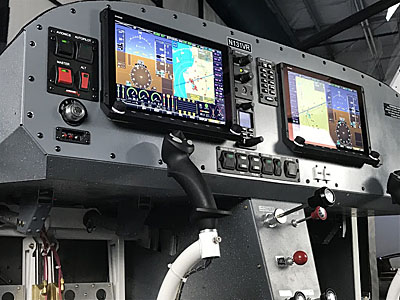 The prototype Ranger has “canvas slate gray upholstery, light gray floor and sidewalls, a gray instrument panel, and gray center console. At higher price points, you can add other colors and accents. As they move into producing additional aircraft, “the colors for interior will be either gray or black or a combination of both.”
The prototype Ranger has “canvas slate gray upholstery, light gray floor and sidewalls, a gray instrument panel, and gray center console. At higher price points, you can add other colors and accents. As they move into producing additional aircraft, “the colors for interior will be either gray or black or a combination of both.”